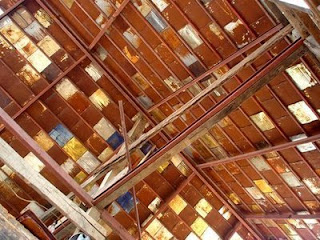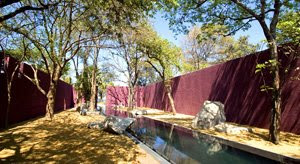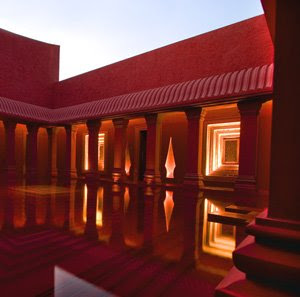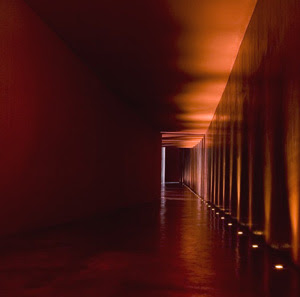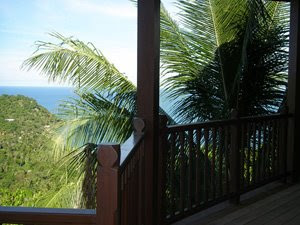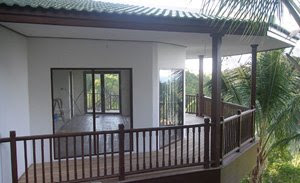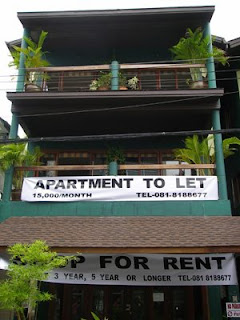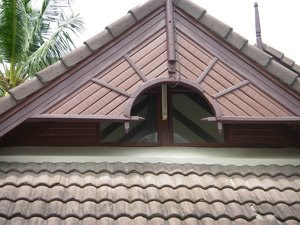Chofa literally means “bunch of air”, but is often more poetically translated as “tassel of air”. And such a poetic rendition suits this most distinctive feature of Thai architecture. On top of the mighty sweeping roofs of a bot (monks’ congregation hall) or vihan (worship hall) is placed an elegant upward curving finial. They are placed on the peek of a roof overhanging the edge. Although, they vary in style, they all possess an elongated ‘s’ shape which is suggestive of an animal form. Sometimes the head is half way up the chofa and sometimes it is at the end. More often than not the appearance is of a bird-like creature with a graceful horn.
The history and exact significance of ‘Chofa’ is disputed. The chofa could be a representation of a garuda – a Hindu mythical bird that is the ‘vehicle’ of the God Vishnu; or it could be a hamsa – which is a goose, gander or swan in Hindu mythology that is the mount or vehicle for the God Brahma.
Another possibility is that it represents a snake or naga. This last option is confusing because nagas are key components of Thai iconography that are found else where in temple compounds. The naga is the half sibling of the garuda and its sworn enemy.
As seen in the picture below, often nagas adopt the pose and style of a chofa and it might be possible to label such examples of Thai architecture as ‘naga chofas’. Naturally opposites in eastern thought are often just 2 sides of the same coin, different aspects of one reality - whether it is the one soul (Atman/Brahman) of Hinduism or the absolute nothingness of Buddhism. Indeed motifs seemed to be combined in creative ways. In one of the pictures below the naga body splits into buddha heads. Furthermore, the naga head often has a bent horn on it that is very much like a chofa. The replication of forms adds to the impressiveness of the architectural forms found in religious buildings in Thailand.
The Naga or snake motif is another important iconic motif in Thai architecture. They are most commonly found on the hand rails of stairs (especially in the ‘Lanna’ style of Northern Thailand); or running down the edge of a temple roof. The body is sometimes coiled, but the head is usually raised. Often there are multiple heads. For Thais the naga is a symbol of comfort and security because in the Buddhist scriptures a mystical serpent is described as protecting and sheltering the Buddha as he meditated.
The history and exact significance of ‘Chofa’ is disputed. The chofa could be a representation of a garuda – a Hindu mythical bird that is the ‘vehicle’ of the God Vishnu; or it could be a hamsa – which is a goose, gander or swan in Hindu mythology that is the mount or vehicle for the God Brahma.
Another possibility is that it represents a snake or naga. This last option is confusing because nagas are key components of Thai iconography that are found else where in temple compounds. The naga is the half sibling of the garuda and its sworn enemy.
As seen in the picture below, often nagas adopt the pose and style of a chofa and it might be possible to label such examples of Thai architecture as ‘naga chofas’. Naturally opposites in eastern thought are often just 2 sides of the same coin, different aspects of one reality - whether it is the one soul (Atman/Brahman) of Hinduism or the absolute nothingness of Buddhism. Indeed motifs seemed to be combined in creative ways. In one of the pictures below the naga body splits into buddha heads. Furthermore, the naga head often has a bent horn on it that is very much like a chofa. The replication of forms adds to the impressiveness of the architectural forms found in religious buildings in Thailand.
The Naga or snake motif is another important iconic motif in Thai architecture. They are most commonly found on the hand rails of stairs (especially in the ‘Lanna’ style of Northern Thailand); or running down the edge of a temple roof. The body is sometimes coiled, but the head is usually raised. Often there are multiple heads. For Thais the naga is a symbol of comfort and security because in the Buddhist scriptures a mystical serpent is described as protecting and sheltering the Buddha as he meditated.

Naga Chofa at Wat Phra Singh







